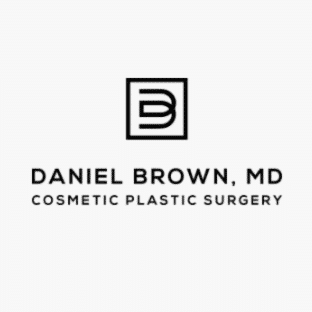
A chemical peel is a dermatological technique used to exfoliate, enhance, and smooth out the skin’s texture. They are essential tools for skin rejuvenation and are used primarily on the face. Chemical peels can treat superficial wrinkles, dark spots, and other skin discolorations. They can brighten and rejuvenate the face while bringing more excellent balance to skin tone and coloration. The success of any peel is dependent on the physician’s understanding of the chemical and biological processes, indications, clinical effectiveness, and potential side effects of the procedures.
offers and more.
Depending on your specific need, the peel’s depth can be specifically tailored for your skin issues during your consultation with Dr. Brown or one of his courteous staff . The treatment usually takes less than 45 minutes and has minimal downtime.
Please contact us or call at (619) 461-1500 to inquire about scheduling your personalized, comprehensive evaluation.
Consultations are offered at our convenient locations in La Jolla and Carmel Valley.
ABOUT CHEMICAL PEELS
Chemical peels remove the skin’s outer layers through a chemical solution that encourages a controlled injury to the epidermis. The healing process regenerates new skin tissue, with the dead skin ultimately peeling off. The new skin ends up becoming smoother and less wrinkled as a result.
It is highly recommended that you seek the guidance of a board-certified dermatologist or plastic surgeon before pursuing any type of chemical peel.
Our Patients Can't Stop Smiling!
See what they’re saying about their time at Dr. Daniel Brown’s practice.


TYPES OF CHEMICAL PEELS
There are many chemical peel options available, ranging in strength from mildly superficial to intense resurfacing.
LIGHT PEELS
Also known as superficial peels, a light peel is the gentlest option. They are suitable for dry or sensitive skin. Recommended for skin brightening and treating acne and hyperpigmentation.

- Ɑ Hydroxy Acid Peel (Alpha Hydroxy Acids)
- AHAs are the mildest of all the formulas and creates light peels
- Treats fine wrinkles, dry areas, uneven coloration, and acne
- Can be mixed with facial washes, creams, etc. as part of a daily skincare routine
- AHAs are the mildest of all the formulas and creates light peels
- β Hydroxy Acid Peel (Beta Hydroxy Acids)
- BHA, or salicylic acid, is antibacterial and anti-inflammatory, making it ideal for treating acne, reducing spots and bumps.
- As they are lipid-based, these peels are attracted to oil and react very well to oily skin types, regulating the oil production on acne-prone skin.
- Jessner’s Peel
- Usually, a combination of resorcinol, lactic acid, and salicylic acid in an ethanol base.
- These peels vary in strength depending on the level of acids used.
- Peel is often followed up by applying a layer of retinoic acid to break up the skin cells.
- Lactic Peel
- Great for sensitive skin and helps moisturize.
MEDIUM PEELS
Medium peels penetrate the skin on a deeper level than light peels. They are typically used to treat acne scars, deep wrinkles, and hyperpigmentation. This treatment is more intense and requires a few days of downtime.
- Trichloroacetic Acid Peel
- TCAs are the most commonly used medium-strength chemical peels, coming in many strengths and combinations.
- Administered only by a physician.
- Ideal for treating severe pigmentation issues, sun damage, deep wrinkles, and acne scars.
DEEP PEELS
Deep peels are the most substantial level of chemical peel. Usually, only one treatment is needed. It helps treat deep acne scars and wrinkles. There is significantly more downtime associated with this chemical peel level, with redness and peeling lasting up to a week.
- Phenol Peel
- Also known as carbolic acid.
- The most powerful chemical peel solution.
- Administered by a physician.
BENEFITS
- Treats Acne
- A peel can go further and exfoliate deeper than any topical acne treatment can.
- It cleanses your skin entirely, revealing a fresh new acne-free layer of skin.
- Peel treatments for acne are more effective when taken in a series.
- Minimizes Pores
- Our pores look more prominent as we age. By removing the damaged outer layer of skin through a peel, you can make them appear smaller.
- Eliminates Fine Lines & Wrinkles
- The chemical solutions in peels can permanently remove fine lines and erases deep, stubborn wrinkles.
- Dissolves Discoloration
- A peel can treat discoloration issues like hyperpigmentation, sunspots.
- Lifts Skin
- One of the benefits of getting a chemical peel is that it lifts the skin with less downtime, making it a great non-surgical alternative to facelifts.
- Relieves Scarring
- There’s a perception that scars are permanent, but that’s not entirely accurate.
- A chemical peel can treat scars from acne and many other things.
- Scars fade when exposed to the chemicals in peels.
- Harmonizes Texture
- Blemishes and uneven skin tone can create an uneven complexion.
- Peels bring overall balance to skin texture.
- Smoothes Skin
- Peels can lift off the rigid outer layers of skin from the face, neck, or hands to uncover a new, smooth layer.
- Non-Invasive
- Chemical peels are one of the most effective rejuvenation techniques that don’t require surgery or needles.
- Peels can be paired with other treatments.
CANDIDATES
The ideal candidate for a chemical peel is somebody who is bothered by the presence of facial skin issues such as:
- Crow’s feet
- Acne scars
- Sun damage
- Wrinkles
- Moderate sagging
Chemical peels are not recommended to people with darker skin since they can lead to uneven skin tone.
Do not seek a chemical peel if you have:
- Infections
- Cut skin
- Sunburns
- Psoriasis
- Eczema
- Dermatitis
- Rosacea
PERSONAL CONSULTATION
Before you decide on getting a chemical peel, you will want to schedule a consultation with your board-certified dermatologist or trained medical aesthetician to discuss your goals. They will give your skin and provide you with a pre-treatment plan. Your plan will be dependent on your skin’s level of thickness, texture, and tone.
Take the Next Step
Schedule a consultation at our welcoming facilities to get started. Begin your cosmetic journey with Dr. Daniel Brown today!

PREPARATION
If you want great results from your chemical peel, you must prepare correctly.
THINGS TO AVOID BEFORE YOUR PEEL
- Smoking
- Sun exposure
- Certain Skin Treatments
- Tanning
- Waxing
- Collagen injections
- Botox
- To avoid over-exfoliation and irritation, do not get another peel for at least two weeks after receiving one.
- Certain Medications
- Birth control pills
- Antihistamines
- NSAIDs
- Antimicrobials
- Tranquilizers
- Diabetes medication
- Psoralens
- Antibiotics
- Thiazide diuretics
- Tricyclic antidepressants
THINGS YOU SHOULD DO BEFORE YOUR PEEL
- Use lotions & creams
- Use a bleaching agent
- If possible, arrange for a ride home
PROCEDURE
First, your doctor or medspa specialist will clean your face and dry it.
LIGHT PEEL
Your doctor or specialist will apply the solution to your skin with either a cotton ball, brush, gauze, or sponge. After waiting a bit, they will wash the chemicals out of your skin. Afterwards, they might soothe your skin with some protective ointment.
MEDIUM PEEL
Your doctor or specialist will apply the solution to your skin with either gauze or a cotton-tipped applicator. Next, they will soothe the skin by utilizing cold compresses. They might also turn on a fan for added coolness. After applying the protective ointment, they may be asked to take some medication like Ibuprofen or Aleve for mild pain relief.
DEEP PEEL
Using IV fluids, your doctor or specialist will sedate you. They will then apply the acid solution with a cotton-tipped applicator to the skin. Treatment is done in fifteen to twenty-minute intervals, making the process go up to ninety minutes altogether. Afterwards, they will apply a watertight dressing to the treated area. If necessary, pain medication may be prescribed later.
RECOVERY
AFTER A LIGHT PEEL
Your skin will be mildly irritated, along with redness and dryness. Makeup can usually be worn the next day. Skin will take about one to seven days to heal. New skin could potentially be lighter or darker for a brief period of time.
AFTER A MEDIUM PEEL
Your skin will sting and be red and inflamed. Makeup can be worn in five to seven days after treatment. Use ice packs and take medication like Advil, Motrin, or Aleve. The swelling will eventually decrease before your skin develops a crust. It takes about a week or two to heal completely. Redness could potentially last for months.
AFTER A DEEP PEEL
Results in burning and throbbing sensations along with severe redness and swelling. Eyelids could potentially be swollen shut.
Your doctor will apply a surgical dressing to the treated areas. Pain medication may be prescribed. You will need to treat your skin to a soak and ointments several times a day for two weeks. Redness can last for months.
Your doctor will want to monitor your healing, so multiple checkups will have to be arranged. Makeup can be used after two weeks. Use sunscreen.
RESULTS
- Light Chemical Peel
- Improves skin texture & tone and lessens fine wrinkles.
- Results are subtle but build up with repeated treatments.
- Medium Chemical Peel
- Skin is noticeably smoother.
- Deep Chemical Peel
- Dramatic improvements
If you’re interested in the many services we provide at the offices of Dr. Daniel Brown , then check out our blog , where you can find all sorts of helpful information and updates on our latest specials. We hope to see you soon!
FAQ
What is a chemical peel?
A chemical peel is a process that exfoliates and smoothes the texture of the skin.
How do chemical peels work?
Chemical peels work by using a chemical solution to remove the outer layer of skin to reveal the new, radiant skin underneath.
Are chemical peels only for your face?
No. Although they’re mainly used on people’s faces, you can get a chemical peel on your arms, legs, chest, and stomach.
What skin conditions do chemical peels treat?
Chemical peels can treat acne scars, large pores, sun damage, crow’s feet, wrinkles, and sagging.
How many peels do I need?
It all depends on the severity of your skin conditions and your treatment plan. For light peels, schedule them for a monthly basis. For medium peels, every four to six months. For deep peels, once every few years.

Telephone No.619-461-1500
